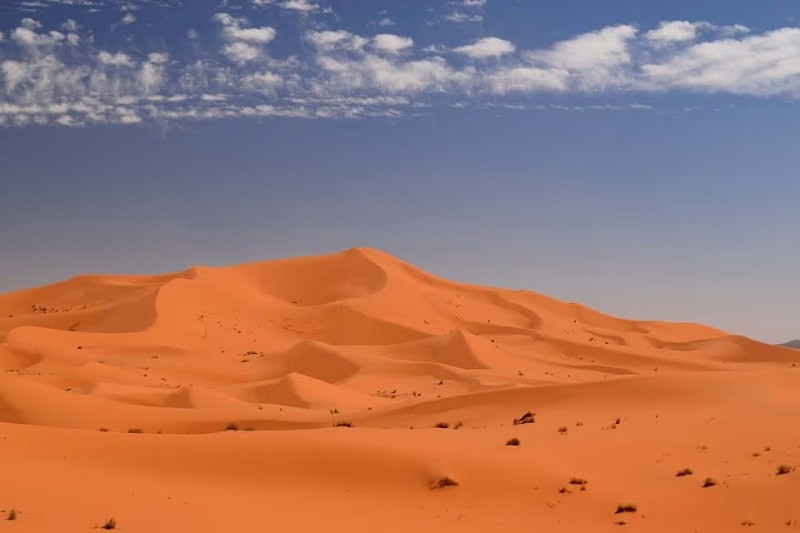
For the first time in decades, parts of the Sahara Desert in southeastern Morocco have been flooded by a rare deluge of rainfall, creating striking scenes of blue lagoons amid sand dunes and palm trees.
This unexpected event has brought more water to some of the world's driest regions than they had seen in nearly 50 years.
Dramatic images have surfaced of rare floods in the Sahara Desert after two days of heavy rainfall in southeastern Morocco.
In September, the region saw more rain than its yearly average, with Tagounite recording 100mm (3.9 inches) in just 24 hours. Satellite images from NASA revealed Lake Iriqui, dry for 50 years, filling up again.
Houssine Youabeb from Morocco’s meteorology agency stated that it had been decades since such intense rainfall.
The deluge caused significant damage, killing 18 people and refilling reservoirs at record rates.
Experts believe these extratropical storms could signal future weather changes as global warming accelerates the water cycle.
Typically, this region receives less than 10 inches of rain annually.
Among the hardest-hit areas was Tata, while the village of Tagounite recorded over 3.9 inches of rain in just 24 hours.
One of the most dramatic outcomes of this rare weather event was the refilling of Lake Iriqui, a dry lake bed between Zagora and Tata that had been barren for 50 years.
Palm trees reflected in newly formed lakes in Merzouga and other desert towns astonished local residents and tourists alike.
"It's been 30 to 50 years since we've had this much rain in such a short time," said Houssine Youabeb of Morocco's General Directorate of Meteorology.
Meteorologists attributed the rare event to an extratropical storm, speculating that this phenomenon could shift weather patterns in the Sahara in the coming years as the region’s air retains more moisture.
This unusual rainstorm brought both benefits and challenges.
On the one hand, the rainfall is expected to replenish groundwater aquifers that sustain desert communities.
Reservoirs across the region have reported record refilling rates.
However, the storms also caused significant damage. More than 20 people were killed in Morocco and Algeria, and many farmers saw their harvests ruined.
The Moroccan government has since allocated emergency relief funds to assist the affected areas, including those still recovering from last year's earthquake.
As the desert landscape temporarily transforms with new lakes and streams, the long-term impact of this unprecedented rainfall remains uncertain, especially regarding the region’s ongoing drought crisis.
However, the sight of water gushing through the Saharan sands has provided a rare and dramatic contrast to the usual arid conditions of the vast desert.
This event underscores the unpredictable nature of climate patterns and the delicate balance of ecosystems in one of the most arid regions of the world








1728818536-0/Copy-of-Untitled-(6)1728818536-0-270x192.webp)



1728722311-0/Copy-of-Untitled-(7)1728722311-0-270x192.webp)






COMMENTS
Comments are moderated and generally will be posted if they are on-topic and not abusive.
For more information, please see our Comments FAQ